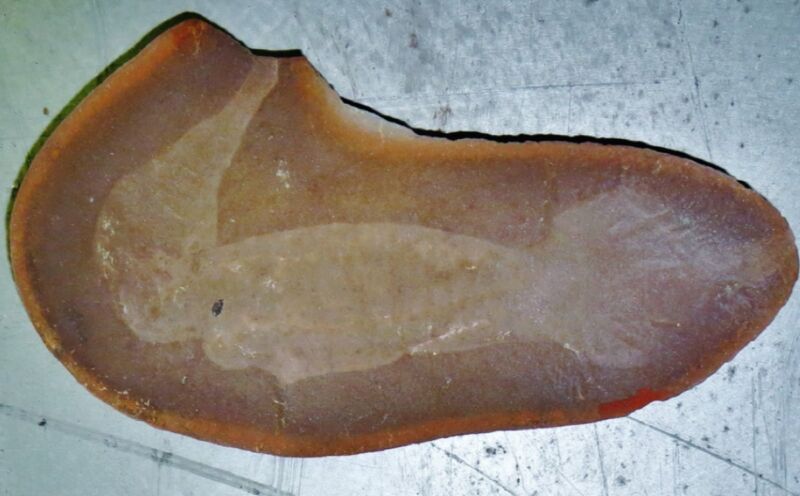
The state fossil of Illinois is a strange creature with stalked eyes and a long nose-like appendage with teeth, dubbed the "Tully monster." Specimens typically measure just 15 centimeters (about 6 inches), but the tiny creatures sparked a major decadeslong scientific debate over whether they should be classed as vertebrates or invertebrates. That mystery may now have been solved, according to a team of Japanese scientists who claim their 3D scans of a generous sampling of fossils rule out the vertebrate hypothesis. They described their findings in a recent paper published in the journal Nature.
The fossil gets its name (Tullimonstrum gregarium, or "Tully's common monster") from Francis Tully, an amateur fossil collector who discovered the specimen in 1955 while scouring the Mazon Creek fossil beds in Illinois—the only site where Tully monster fossils have been found. He had never seen anything like this "torpedo"-shaped fossil and brought it to paleontologists at the Field Museum of Natural History in Chicago for identification. But the paleontologists there couldn't figure out how to classify it.
While it might resemble a slug at first glance, Tully monster fossils have several unique features, most notably an elongated, flexible proboscis (long nose with teeth) and outward-protruding eyes on stalks, similar to those of a hammerhead shark. Tully has been compared to gastropods (slugs and snails), conodonts (an extinct group of jawless vertebrates), polychaetes (segmented marine worms), nemerteans (ribbon worms), and nectocarids (a squid-like Cambrian organism) in the ensuing decades. If it was a vertebrate, then the Tully monster would fill a critical gap in evolutionary history, connecting jawless fish (such as lampreys and hagfish) to jawed fish.
The strongest case for classifying Tully as a vertebrate rests on a pair of 2016 papers, one a detailed morphological study, the other focusing on the creature's eye anatomy. Most notably, the authors of the morphological study claimed that Tully had a rod made of cartilage (notochord) similar to a backbone; multiple rows of insect-like stylets or piercing teeth next to the mouth, similar to lampreys; an elongated segmented body with tail fins; and gill pouches. The same team followed up with a 2020 study in which they used Raman microspectroscopy on several fossils from Mazon Creek, concluding those results also supported their vertebrate hypothesis. Those spectral signal results were later replicated in a 2022 study.
The second 2016 study concluded that Tully should be grouped with vertebrates because the pigment granules in the eyes, called melanosomes, were arranged by shape and size much like vertebrate eyes. But other scientists cast doubt on that conclusion with a 2019 study investigating the chemical makeup of samples of Tully monster fossils, as well as samples from animals still living today. Those scientists used synchrotron radiation to zap the samples, causing each element to release a unique X-ray signature that could be detected to identify the sample's composition.


/https://tf-cmsv2-smithsonianmag-media.s3.amazonaws.com/filer/f7/7f/f77f4b7a-667a-46c0-aaac-31a346639798/tully-short.jpg)
3175x175(CURRENT).thumb.jpg.b05acc060982b36f5891ba728e6d953c.jpg)
Recommended Comments
There are no comments to display.
Join the conversation
You can post now and register later. If you have an account, sign in now to post with your account.
Note: Your post will require moderator approval before it will be visible.